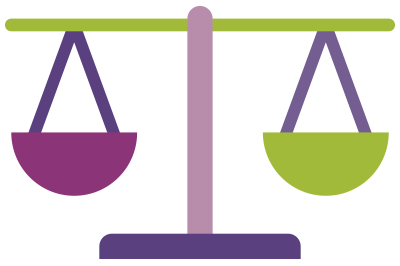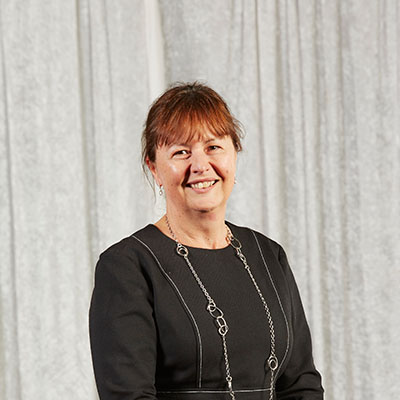Occupational Therapy Board of Australia
2015/16 Annual Report Summary
At a glance: Regulating occupational therapists in 2015/16
This annual report summary provides a snapshot of our work regulating more than 18,000 registered occupational therapists in the financial year to 30 June 2016.
A more detailed profile, encompassing data relating to all 14 National Boards in Australia, is published in AHPRA and the National Boards’ 2015/16 annual report
657,621 health practitioners in 14 professions registered in Australia in 2015/16
18,304 of these were registered as occupational therapists
This is 2.8% of the registrant base

Registration grew by 4.7% from 2014/15

91.5% women
8.5% men

7,922 registered students; down 3.8%1

2,200 new applications for registration received

2,288 criminal history checks were carried out for occupational therapists, resulting in:
66 disclosable court outcomes;
No regulatory action needed to be taken.
35 notifications (complaints or concerns)2 were lodged with AHPRA about occupational therapists

28 notifications were closed3

6 complaints were made about possible statutory offences relating to occupational therapy services
5 statutory offence matters were closed
Note:
- Compared with 2014/15.
- This figure refers only to matters managed by AHPRA. For total notifications received about the profession, including matters managed by the Health Professional Councils Authority (HPCA) in NSW, please refer to Table 4.
- This figure represents complaints managed and closed by AHPRA and excludes matters managed by the HPCA.
About this report
This report provides a profession-specific view of the work of the Occupational Therapy Board of Australia (the Board) to manage risk to the public and regulate the profession in the public interest in 2015/16.
The Board has worked in close partnership with the Australian Health Practitioner Regulation Agency (AHPRA) to provide all Australians with a safe, qualified and competent workforce under the National Registration and Accreditation Scheme (the National Scheme).
Information included in this report is drawn from the data published in the 2015/16 annual report by AHPRA and the National Boards, and was correct as at 30 June 2016.
Whenever possible, historical data are provided to show trends over time, as well as comparisons between states and territories.
For a wider context, and to compare the profession against national data from all 14 professions regulated by National Boards under the National Scheme, this report should be read in conjunction with the 2015/16 annual report. Download the report.
Message from the Chair, Occupational Therapy Board of Australia
The Occupational Therapy Board of Australia is one of 14 Boards regulating registered health practitioners across Australia. Under the National Scheme, occupational therapists register once, renew yearly and can practise anywhere in Australia.
Under the National Scheme, the Board sets policies and standards to regulate the occupational therapy profession. AHPRA supports the Board’s role to protect the public by ensuring that only health practitioners who meet the mandatory standards and who have the skills, qualifications and knowledge to provide safe care are registered.
During 2015/16, the Board continued to work on a number of initiatives, including revising core registration standards and reviewing competency standards (see Year in review). These revisions and reviews ensure that occupational therapists continue to have the skills, qualifications and knowledge necessary to competently and safely practise within a changing environment.
This report outlines the Board’s decision-making work in partnership with AHPRA in 2015/16 and breaks down data to offer unique insight into the occupational therapy profession in Australia today.
Ms Julie Brayshaw served as the Board’s Presiding Member from March 2015 until March 2016, when she was appointed Chair.

Ms Julie Brayshaw
Chair, Occupational Therapy Board of Australia
Members of the National Board in 2015/16
- Ms Julie Brayshaw (Chair)
- Mr James Carmichael
- Ms Louise Johnson
- Mrs Rachael Kay
- Ms Roxane Marcelle-Shaw
- Mrs Kathleen MacRae (until 31 March 2016)
- Dr Katherine Moore
- Mrs Terina Saunders
- Ms Louisa Scott
During 2015/16, the Board was supported by Executive Officer Vathani Shivanandan.
More information about the work of the Board, including codes, guidelines and information on registration standards, can be found on the Board website.
Message from the Agency Management Committee Chair and the AHPRA CEO
Since the National Scheme began six years ago, AHPRA has worked in partnership with the National Boards to ensure that the community has access to a safe and competent health workforce across 14 registered health professions Australia-wide.
We rely on the expertise and insights of the National Boards to make decisions about the 657,621 health practitioners currently registered in Australia in the interests of the Australian public. It’s a role that Board members commit to with dedication and passion, and the community can be assured that its safety is always their number-one priority.
As at 30 June 2016, there were 18,304 registered occupational therapists. These practitioners represent 2.8% of the total registrant base.
Overseeing the registration and regulation of the profession is the Occupational Therapy Board of Australia, with valuable input from professional and community groups. Together, they uphold the values of the National Scheme by taking a riskbased approach to regulatory decision-making and policy implementation, with a continued focus on improving effectiveness, efficiencies and timeliness.
This year, the Board continued its focus on collaboration by engaging with many stakeholders, including other National Boards, to consult on reviewing registration standards, and engaged with practising occupational therapists and new graduates to gain their feedback.
We’d like to thank the Board members for their continued commitment to ensuring a competent and flexible health workforce that meets the current and future health needs of the community.
We look forward to continuing to work in partnership with the Board.

Mr Martin Fletcher,
Chief Executive Officer

Mr Michael Gorton AM,
Chair, Agency Management Committee
Year in review: Occupational Therapy Board of Australia
During 2015/16, the Board reduced practitioner fees, oversaw practitioner audits and continued work on a number of major projects in order to streamline processes and increase efficiency.
1 The registration fee for occupational therapists was reduced to $130, which is $30 less than in the previous year. The fee reduction applied from 9 September 2015 in all states and territories except NSW, which is a co-regulatory jurisdiction. The fee for practitioners whose principal place of practice is NSW was $120 during the same period. The National Scheme is funded by practitioners’ registration fees. By reducing the fee for the third year in a row, the Board was able to ease the cost burden on practitioners while still earning sufficient income to meet its regulatory obligations.1
In beginning work to conduct a comprehensive review of competency standards for the profession, the Board established a Competency Standards Reference Group and Competency Standards Advisory Panel in late 2015. Carramar Consulting was appointed to research and develop the revised standards. The Board is committed to working with the profession, the education sector and other stakeholders to develop revised competency standards that reflect the breadth of occupational therapy practice, and are applicable in all practice settings including clinical, educational and regulatory contexts. The proposed revised draft standards have been developed, with preliminary consultation to obtain feedback from the profession beginning early in 2016/17.
The Board has received feedback from the profession about the need for greater flexibility in return-to-work pathways for practitioners who no longer meet the recency of practice registration standard. In response, a project was commenced to explore alternative pathways for occupational therapists to demonstrate their competence when returning to work after an extended break.
The Board has also been working collaboratively with the three other Boards that joined the National Scheme in 2012 to review the continuing professional development, professional indemnity insurance and recency of practice registration standards. The preparatory phase of the review was completed and draft revised standards have been developed. Planning is well under way to begin preliminary and public consultation about the proposed standards.
Actively engaging with practising occupational therapists and other stakeholders continues to be a priority for the Board. Board members attended a variety of speaking events for practitioners and new graduates across Australia. Representatives of the Board also attended the 6th Asia Pacific Occupational Therapy Congress in New Zealand in September 2015, to learn from their international counterparts and present an analysis of risks and trends in notifications made about practitioners in Australia.
In May 2016, the Board hosted its first forum with occupational therapy education providers. The Victorian forum enabled Board members to engage with education providers about how the Board’s work affects the education sector, and to explore their issues and obligations under the Health Practitioner Regulation National Law, as in force in each state and territory (the National Law). Similar forums are being planned for other jurisdictions in the next financial year.
Note:
- The registration fee for occupational therapists was reduced to $130, which is $30 less than in the previous year. The fee reduction applied from 9 September 2015 in all states and territories except NSW, which is a co-regulatory jurisdiction. The fee for practitioners whose principal place of practice is NSW was $120 during the same period.
Data snapshot: Regulation at work in 2015/16
The profession in brief
- The occupational therapy registrant base grew by 6.4% year on year, to 18,304.
- New South Wales (NSW) was the principal place of practice for most of these practitioners (5,167); the Northern Territory (NT) was home to the least (175).
- The age bracket with the most practitioners was 25–29 (4,024 registrants).
- 1,777 practitioners were under 25 years of age; two were aged 75 or over.
- Women comprised 91.5% of the profession.
About our data
Data in this Board summary are drawn from the 2015/16 annual report, published by AHPRA and the National Boards. Data relating to occupational therapists have been extracted from national source data that include all 14 health professions currently regulated under the National Law.
In the following pages you’ll find registration data, including registrant numbers by principal place of practice, age and gender, as well as data about notifications (complaints or concerns) received about occupational therapists in the financial year to 30 June 2016. Data about possible statutory offences made by the profession are also included.
For a further breakdown of data from the 2015/16 annual report by AHPRA and the National Boards, including data on other professions and summary reports by state and territory, go to the 2015/16 annual report.
Notifications data
Notifications are complaints or concerns that are lodged with AHPRA about registered health practitioners or students practising in Australia.
Our data generally excludes complaints handled by co-regulatory jurisdictions, such as in:
- NSW, where complaints about health practitioners with this state as their principal place of practice (PPP) are not managed by the Board and AHPRA, unless the conduct occurred outside NSW. Complaints about health practitioners where the conduct occurred in NSW are handled by the Health Professional Councils Authority (HPCA) and the NSW Health Care Complaints Commission (HCCC), and
- Queensland, where complaints are received and managed by the Office of the Health Ombudsman (OHO) and may be referred to AHPRA and the relevant National Board. We are not able to report on all complaints about health practitioners in Queensland because we only have access to data relating to matters referred to us by OHO.
Note that some NSW regulatory data published in this report may vary from data published in the HPCA’s annual report. This is due to subsequent data review by the HPCA after submission of initial data to AHPRA. For more information on how complaints about health practitioners are managed in NSW, and for data about complaints made in the state, please refer to the HPCA website.
For data relating to complaints in Queensland that have not been referred to AHPRA, please refer to the OHO website.
Registration of occupational therapists
As at 30 June 2016, there were 18,304 occupational therapists registered across Australia. This represents a national increase of 6.4% from the previous year.
Occupational therapists made up 2.8% of all registered health practitioners across the National Scheme. Of all registered occupational therapists:
- 95.9% held general registration to practise occupational therapy, with this cohort of registrants increasing by 6.4% from 2014/15
- 0.2% held provisional registration and were undertaking a period of supervised practice while they progressed towards being eligible for general registration. There were 2.4% fewer registrants in this category than in 2014/15
- less than 0.4% held limited registration, which allows internationally qualified occupational therapists to provide occupational therapy services under supervision, and
- 3.5% held non-practising registration and could not practise occupational therapy. This category of registrants increased by 12.8%.
There were 7,922 registered occupational therapy students at the end of 2015/16, which is 3.8% fewer than the previous year.
The Board received 2,200 new applications for registration; up 5.9% from 2014/15. Of these, 81.8% were for general registration and 13% were requests to move to the non-practising register.
See Tables 1–3 for segmentation of registration data about occupational therapists.
As a standard part of the registration process, applicants for initial registration as a health practitioner in Australia must undergo a criminal record check. AHPRA requested 66,698 domestic and international criminal history checks for practitioners across all professions in 2015/16. Of these, 2,288 checks were carried out for practitioners wanting to register as occupational therapists. The checks resulted in 66 disclosable court outcomes. No conditions or undertakings were imposed on a practitioner’s registration.
For source data on criminal history checks, and more registration information across all regulated health professions, please refer to the 2015/16 annual report by AHPRA and the National Boards.
Regulation of occupational therapists
In 2015/16, there were 59 notifications received nationally about occupational therapists (including HPCA data). This represents an increase of 20.4% from the previous year. The number of matters received and managed by AHPRA was 35 (excluding HPCA). Notifications about occupational therapists represented 0.6% of all notifications received by AHPRA (excluding HPCA) in 2015/16.
On a national basis, the percentage of registered health practitioners with notifications received during the year was 1.5%. The percentage of all registered occupational therapists nationally with notifications received was 0.3%.
No immediate action was taken on matters relating to occupational therapists in 2015/16 (compared with one instance in 2014/15). A National Board has the power to take immediate action in relation to a health practitioner’s registration at any time, if it believes this is necessary to protect the public. Immediate action limits a practitioner’s registration by suspending or imposing conditions on it, or accepting an undertaking or surrender of the registration from the practitioner or student. This is an interim step that Boards can take while more information is gathered or while other processes are put in place. To take immediate action, the Board must reasonably believe that:
- because of their conduct, performance or health, the practitioner poses a ‘serious risk to persons’ and that it is necessary to take immediate action to protect public health or safety, or
- the practitioner’s registration was improperly obtained, or
- the practitioner or student’s registration was cancelled or suspended in another jurisdiction.
A total of 28 notifications relating to a registered occupational therapist (excluding HPCA) were closed in 2015/16. This is 0.5% of all matters closed across all professions. Of the closed notifications:
- 10.7% resulted in conditions being imposed or an undertaking accepted by the Board
- 14.3% resulted in the practitioner receiving a caution or reprimand by the Board
- none resulted in suspension or cancellation of registration, and
- 75% resulted in no further action being taken by the Board (no further action is taken when, based on the available information, the Board determines there is no risk to the public that requires regulatory action).
Nineteen notifications about occupational therapists (excluding HPCA) were open as at 30 June 2016.
There were 38 active monitoring cases relating to registered occupational therapists (including HPCA). This represents 0.7% of all monitoring cases across all professions.
Statutory offences are breaches of the National Law, committed by registered health practitioners and unregistered individuals. There are a number of offences created under the National Law, including the following:
- unlawful use of a protected title
- performing a restricted act
- holding out (claims by individuals or organisations as to registration), and
- unlawful advertising.
AHPRA received six new complaints about possible statutory offences relating to occupational therapy in 2015/16. These complaints constitute less than 1% of all statutory offence matters received by AHPRA for the year. All new matters related to title protection concerns. Five statutory offence matters were considered and closed.
See Tables 4–11 for notifications and statutory offence data relating to occupational therapists.
Want to know more?
For data and analysis relating to criminal history checks, outcomes of tribunals and panel hearings, and monitoring and compliance, please refer to the 2015/16 annual report and supplementary data tables published by AHPRA and the National Boards
Segmentation of data by state and territory is also available on the AHPRA website.
For more information on the National Law as it applies to each state and territory, see AHPRA's legisltaion.
Note:
- Blank fields in all tables denote zeros.
- No PPP (principal place of practice) includes practitioners with an overseas address.
Note:
- No PPP (principal place of practice) includes practitioners with an overseas address.
Note:
- Data relating to notifications (complaints or concerns) are based on the state or territory of the practitioner’s PPP (principal place of practice).
- Matters managed by AHPRA where the conduct occurred outside NSW.
- The number of matters referred to AHPRA and the National Board by the Office of the Health Ombudsman.
- No PPP includes practitioners with an overseas address.
- Matters managed by the Health Professional Councils Authority (HPCA) in NSW.
- For 2015/16, notifications are based on the practitioner’s PPP.
- Prior to this, notifications were based on the state or territory where the notification was handled (Responsible Office).
Note:
- Health Professional Councils Authority.
- No PPP (principal place of practice) includes practitioners with an overseas address.
- For 2015/16, notifications are based on the practitioner’s PPP.
- Prior to this, notifications were based on the state or territory where the notification was handled (Responsible Office).
Note:
- Excludes matters managed by the Health Professional Councils Authority (HPCA) in NSW.
- No PPP (principal place of practice) includes practitioners with an overseas address.
- For 2015/16, notifications are based on the practitioner’s PPP.
- Prior to this, notifications were based on the state or territory where the notification was handled (Responsible Office).
Note:
- Matters managed by AHPRA where the conduct occurred outside NSW.
- No PPP (principal place of practice) includes practitioners with an overseas address.
- Matters managed by the Health Professional Councils Authority (HPCA) in NSW.
- For 2015/16, notifications are based on the practitioner’s PPP.
- Prior to this, notifications were based on the state or territory where the notification was handled (Responsible Office).
Note:
- Excludes matters managed by the Health Professional Councils Authority (HPCA) in NSW.
- Closed after initial assessment of the matter.
- Performance assessments are carried out by a Board-selected assessor whose scope of practice is similar to that of the practitioner being assessed (assessors are not Board members or AHPRA staff).
Note:
- Excludes matters managed by the Health Professional Councils Authority (HPCA) in NSW.
- No further regulatory action is usually taken when, based on available information, the Board determines there is no risk to the public that meets the legal threshold for regulatory action. It may also be because a practitioner has taken steps to voluntarily address issues of concern.
Note:
- AHPRA reports by stream, rather than registrants being monitored, because a registrant may have restrictions (conditions or undertakings) in more than one stream. For example, nationally, 4,963 cases monitored by AHPRA relate to 4,861 registrants.
- AHPRA performs monitoring of compliance cases for ‘suitability/eligibility’ stream matters for NSW registrations.
Note:
- This table captures offence complaints by principal place of practice (PPP) and includes all offences from sections 113–116 of the National Law, not only offences about advertising, title and practice protection.
- AHPRA also receives offence complaints about unregistered persons where there is no PPP recorded. Only registered practitioners have a designated PPP.
- Based on state and territory of the practitioner’s PPP.